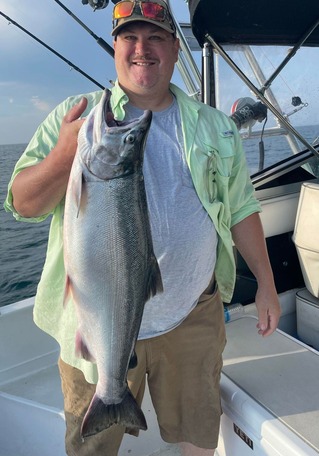In This Issue
Data show alignment with goal of managing public forest lands to sustain multiple benefits
The Minnesota Department of Natural Resources has completed an evaluation of the first four years of implementing its forest management strategic direction for fiscal years 2019-2028. The resulting Midpoint Assessment of Forest Management Strategic Direction: Sustainable Timber Harvest Implementation Report contains the results of that evaluation.
?The midpoint assessment found that, based on available data, the DNR is successfully advancing the 10-year strategic direction for forest management,? DNR Forestry Division Director Patty Thielen said. ?The results of this assessment will help us continue to ensure the forest lands that DNR stewards are sustainably managed for multiple forest benefits.?
The forest management strategic direction established by the DNR in 2018 is designed to move forest conditions on DNR-administered lands toward conditions that sustainably provide a range of forest benefits over time. Timber harvest is a key tool for initiating the disturbance necessary to create and maintain diverse forests, and therefore an important component of the strategic direction is the DNR?s determination of how much timber volume to offer for sale to achieve the disturbance needed.
Because the midpoint assessment covers the first four years of implementation, it focuses heavily on metrics related to timber volume, as these are the measures for which the DNR has sufficient data to evaluate. This does not mean that timber volume offered and sold is the end in itself. Rather, using timber volume as a metric helps the DNR to ensure that harvest-related forest management actions align with objectives to promote wildlife habitat, biodiversity, wood supply and healthy natural resource economies, carbon storage, forest health, recreation, and water quality and quantity on state-administered forest lands.
The report features case studies that illustrate how DNR forest management activities are aligned with the objectives for different types of DNR-administered lands and protect site-specific features such as the presence of endangered or threatened species. ?For example, when designing a timber harvest, we protect rare plant and animal species at the site by identifying areas of no harvest, restricting the timing of management activities or making other management adjustments,? DNR Ecological and Water Resources Division Director Katie Smith said.
In addition to documenting progress implementing the forest management strategic direction, the report outlines some improvements for the second half of the implementation period. These include improving forest management coordination, more thoroughly documenting site-specific management objectives, and discontinuing a pilot to promote additional ash and tamarack management opportunities due to low sell and harvest rates for those species. The DNR is also completing section forest resource management plans and wildlife management area plans that will further inform forest management on DNR-administered lands.
?We?ve gained important insights over the past four years that will help us fine-tune our implementation of the strategic direction, which includes a commitment to managing for wildlife values on Fish and Wildlife-administered lands,? DNR Fish and Wildlife Division Director Dave Olfelt said.
The midpoint assessment is the most comprehensive effort to date to evaluate how the DNR is advancing its forest management strategic direction. Before the end of the ten-year planning period, the DNR will consider available data and updated analyses as well as stakeholder and partner perspectives, to determine whether and how to refine the strategic direction for the following ten years.
View the Midpoint Assessment Report online at the DNR?s Forest Management Strategic Direction webpage?(mndnr.gov/forestry/harvest-analysis).
###

An angler caught a 10-pound, 14-ounce coho salmon from Lake Superior in St. Louis County that the Minnesota Department of Natural Resources has certified as a state record, breaking the previous record from 1970.
David Cichosz caught the salmon on Sept. 4 while on a charter fishing trip with his wife Chris Sky. Cichosz said it was a beautiful morning in which Sky caught the first fish, a nice lake trout, and they proceeded to nearly catch their limit of lake trout before starting to fish for salmon. With Captain Kent Paulsen driving the boat they were sitting back enjoying the morning when Sky noticed the rod really moving.
?I quickly grabbed it and was off on the fight. I kept thinking to myself, ?am I gaining any line on this fish??? Cichosz said, adding that he was tempted to tighten the drag but Paulsen told him to leave it and let the fish take out line. ?Once the fish broke the surface, I could tell by our captain?s response that we had a big fish.?
After they weighed the fish and took pictures, they found a certified scale at a grocery store in Duluth, and turned in the paperwork the next day to the DNR.
?I am thankful for the record but at the end of the day, I am happy to just share the joy of fishing with new friends and fellow [anglers] and to be on the lake with my wife,? Cichosz said.
The DNR announces state records in news releases, on social media and on its website. Find current records and guidelines for each type of state record at on the Minnesota DNR record fish webpage (mndnr.gov/recordfish).
|
###
|
